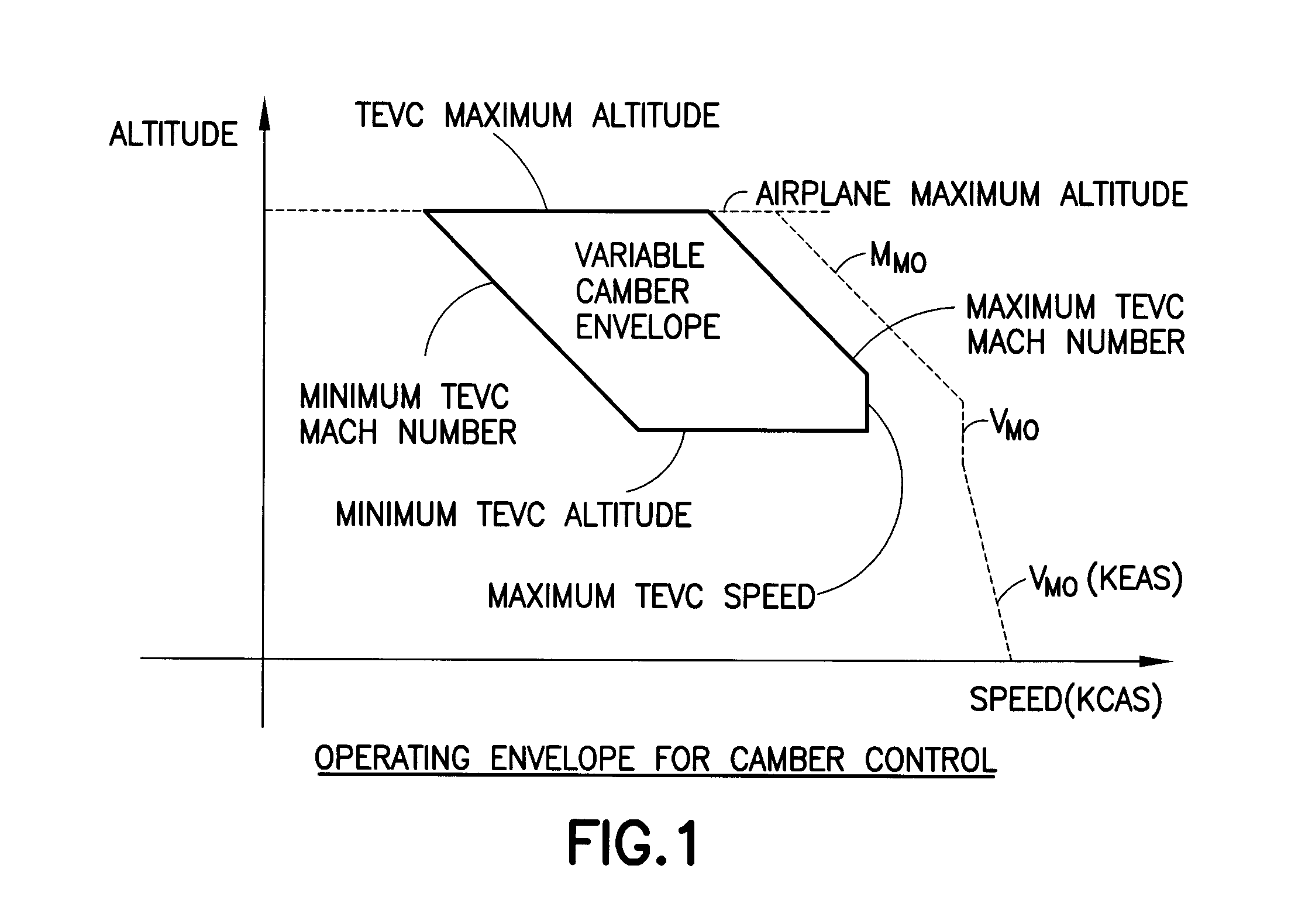Dynamic Adjustment of Wing Surfaces for Variable Camber
a technology of variable camber and wing surface, which is applied in the direction of process and machine control, instruments, navigation instruments, etc., can solve the problems achieve the effect of increasing the design burden on the actuation equipment, reducing airplane drag, and continual optimization of the lift-to-drag ratio
- Summary
- Abstract
- Description
- Claims
- Application Information
AI Technical Summary
Benefits of technology
Problems solved by technology
Method used
Image
Examples
example implementation
of TEVC Control System
[0032]The particular approach to variable camber control for any aircraft is determined by the desired flying qualities of the airplane. The control system of the airplane is comprised of both the control laws and the actuation system, where the later is the means to achieve the control law computed deflection for the controlled surfaces. The general variable camber control approach for implementing a baseline TEVC function may follow these two high level concepts: (1) keep hardware and software changes to a minimum compared to an airplane baseline with no TEVC control designed in; and (2) provide a high lift flaps actuation system that allows for positioning of the Outboard (OB) flaps at different positions compared to the Inboard (IB) flaps. As a result, the design implementation for the purpose of accommodating TEVC control in the baseline is developed with certain operational characteristics. The TE flaps actuation system has a TEVC control unit on each win...
PUM
 Login to View More
Login to View More Abstract
Description
Claims
Application Information
 Login to View More
Login to View More - R&D
- Intellectual Property
- Life Sciences
- Materials
- Tech Scout
- Unparalleled Data Quality
- Higher Quality Content
- 60% Fewer Hallucinations
Browse by: Latest US Patents, China's latest patents, Technical Efficacy Thesaurus, Application Domain, Technology Topic, Popular Technical Reports.
© 2025 PatSnap. All rights reserved.Legal|Privacy policy|Modern Slavery Act Transparency Statement|Sitemap|About US| Contact US: help@patsnap.com



